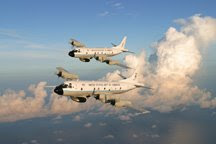Anyway, we have TS Bonnid which, as I write this, is moving through S. Florida with the heavies rains right over Miami - home for me.  From the satellite picture it doesn't look like much, and as you can see from the current NHC track,
From the satellite picture it doesn't look like much, and as you can see from the current NHC track,  it's a fast moving storm which should pass into the Gulf this afternoon and make landfall in Louisiana/Mississippi early Sunday morning. That's a good thing as it will give everyone here in Florida part of the weekend to relax. To see a larger version of these images, just click on them. Remember to hit your back button to return to the blog.
it's a fast moving storm which should pass into the Gulf this afternoon and make landfall in Louisiana/Mississippi early Sunday morning. That's a good thing as it will give everyone here in Florida part of the weekend to relax. To see a larger version of these images, just click on them. Remember to hit your back button to return to the blog.
 From the satellite picture it doesn't look like much, and as you can see from the current NHC track,
From the satellite picture it doesn't look like much, and as you can see from the current NHC track,  it's a fast moving storm which should pass into the Gulf this afternoon and make landfall in Louisiana/Mississippi early Sunday morning. That's a good thing as it will give everyone here in Florida part of the weekend to relax. To see a larger version of these images, just click on them. Remember to hit your back button to return to the blog.
it's a fast moving storm which should pass into the Gulf this afternoon and make landfall in Louisiana/Mississippi early Sunday morning. That's a good thing as it will give everyone here in Florida part of the weekend to relax. To see a larger version of these images, just click on them. Remember to hit your back button to return to the blog.As to our flight schedule for Bonnie, we did have a G-IV flight planned for this afternoon at 1:30 pm and several P-3 flights over the next couple of days. The Hurricane Center, which tasks the Gulfstream G-IV missions, has decided not to waste another flight on Bonnie and has cancelled today's mission. I'm still waiting to here from the other folks about the P-3 flights. The first one is scheduled to depart this afternoon at 4:00 pm and the second at 4:00 am tomorrow morning (same aircraft - different crew). The plan is to repeat these on Saturday/Sunday, but with the storm being ashore early Sunday morning, I think we are limited to only three total missions. Frankly, I see no need for any of these flights considering the condition of the storm and its rapid movement, but that's not my call. I will certainly question the need, but I will provide the support if needed.
More later.
















